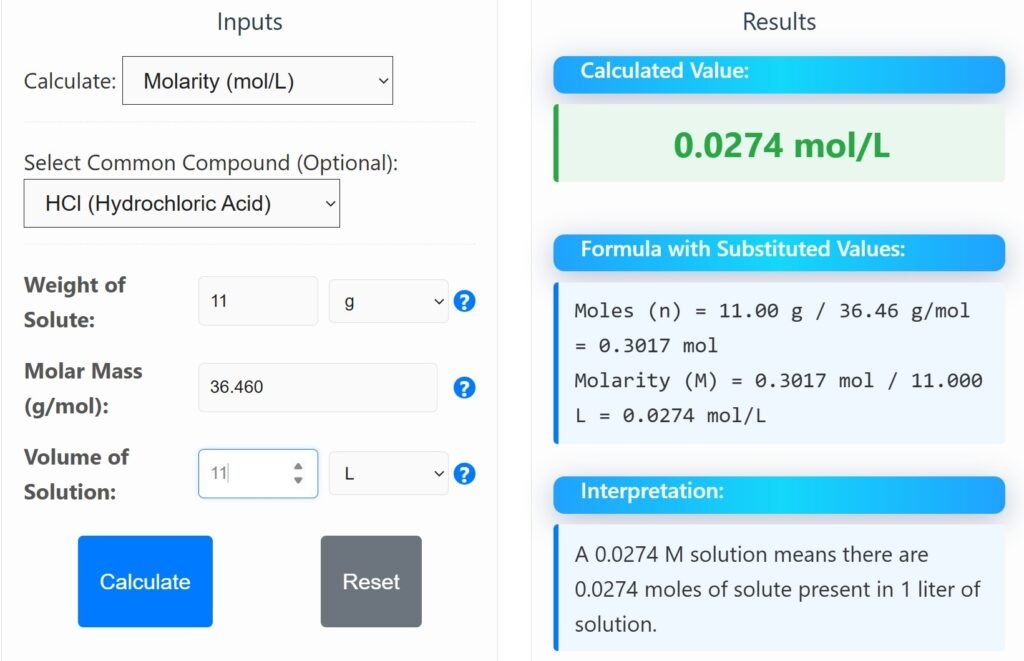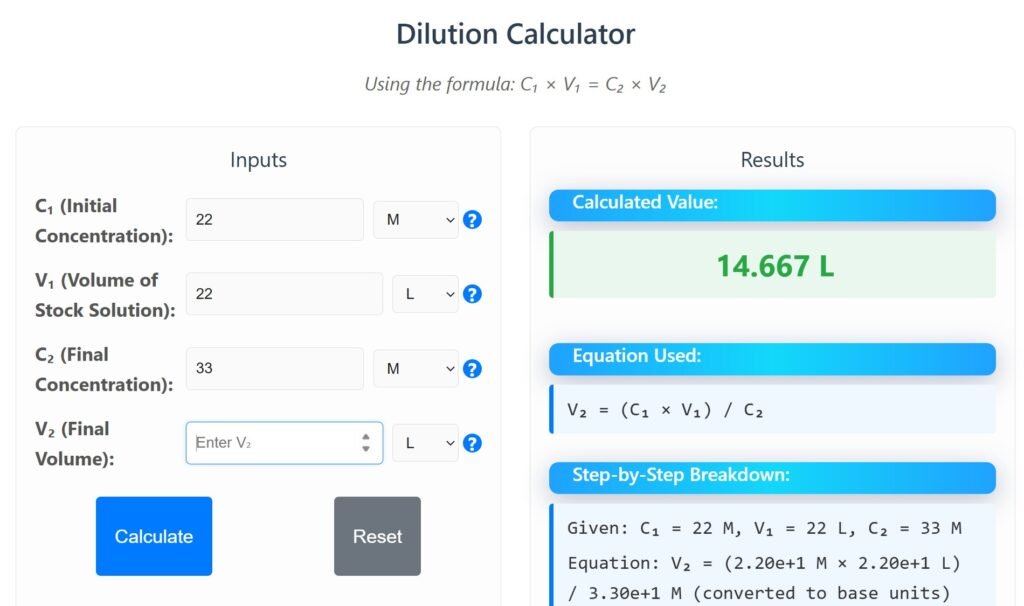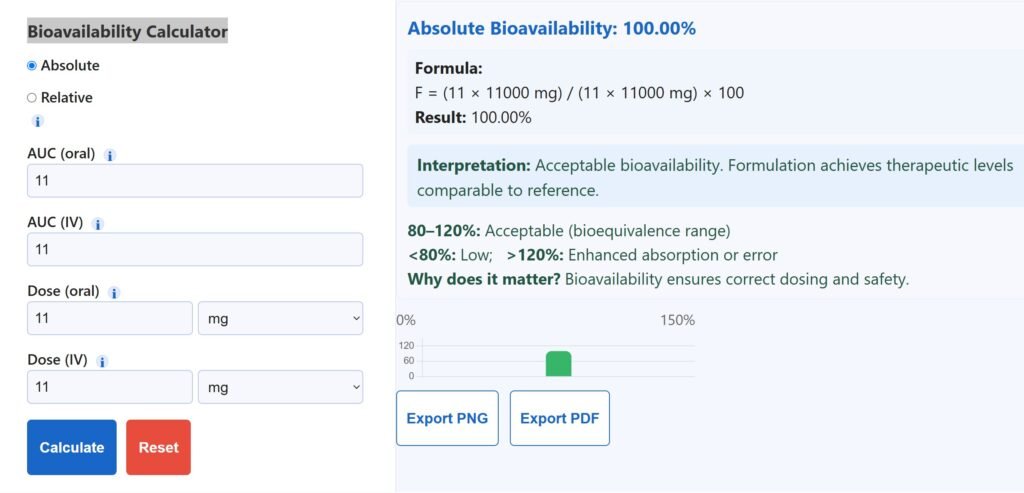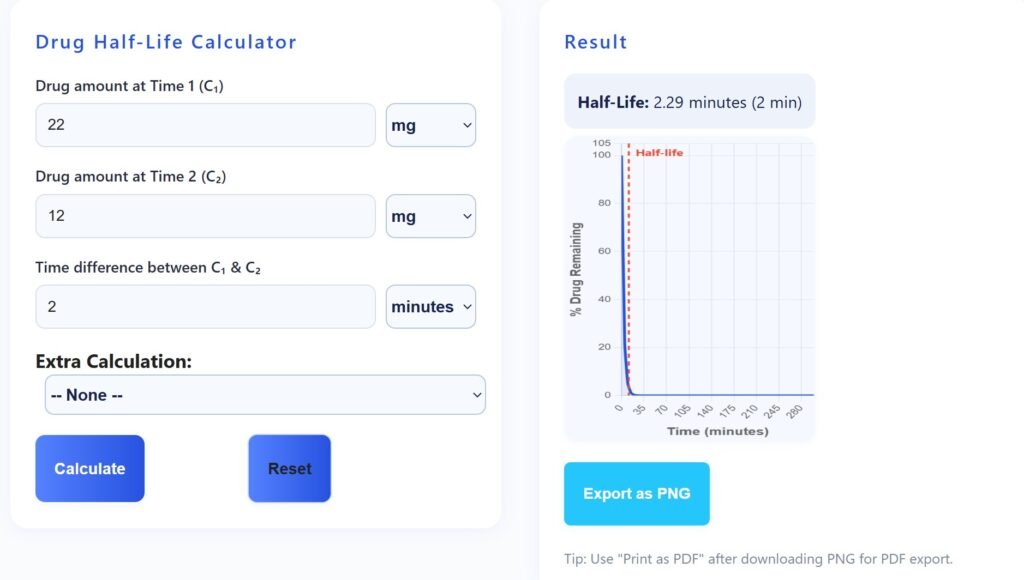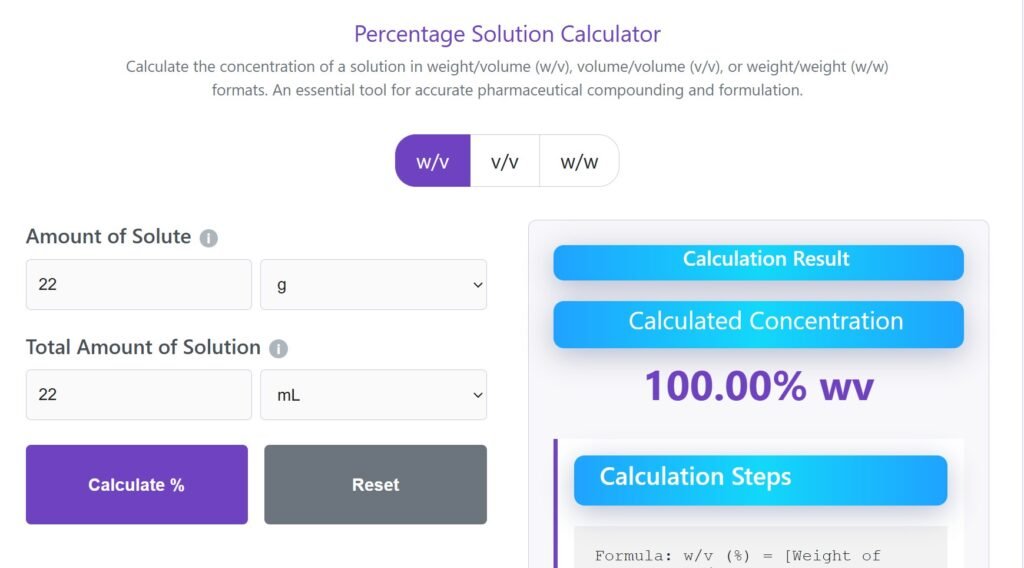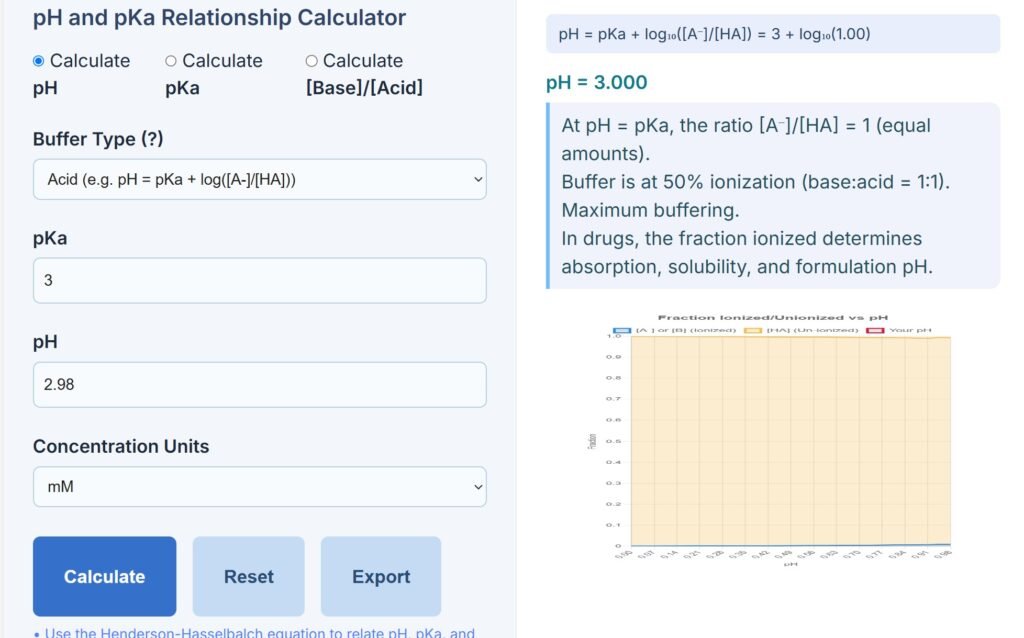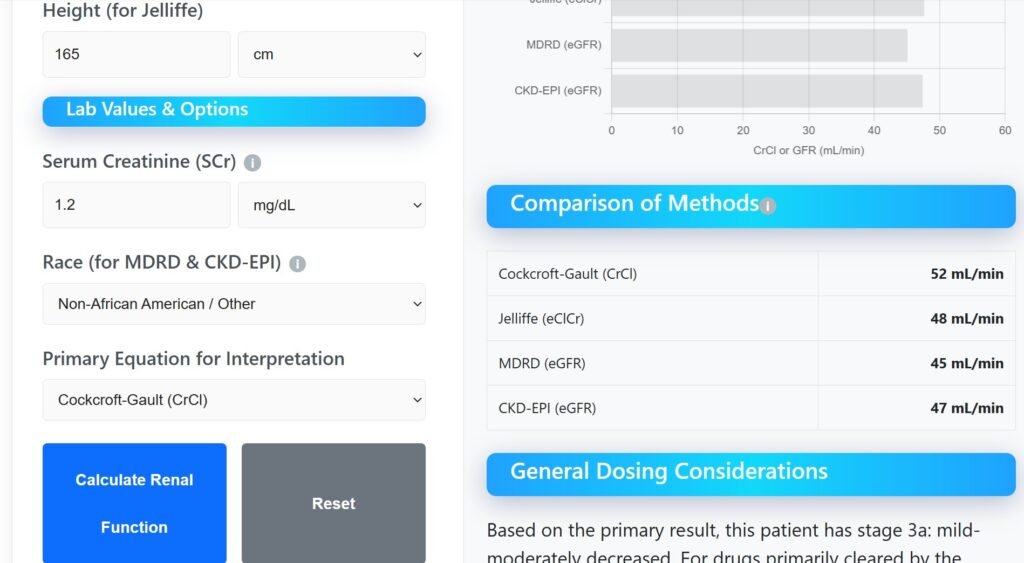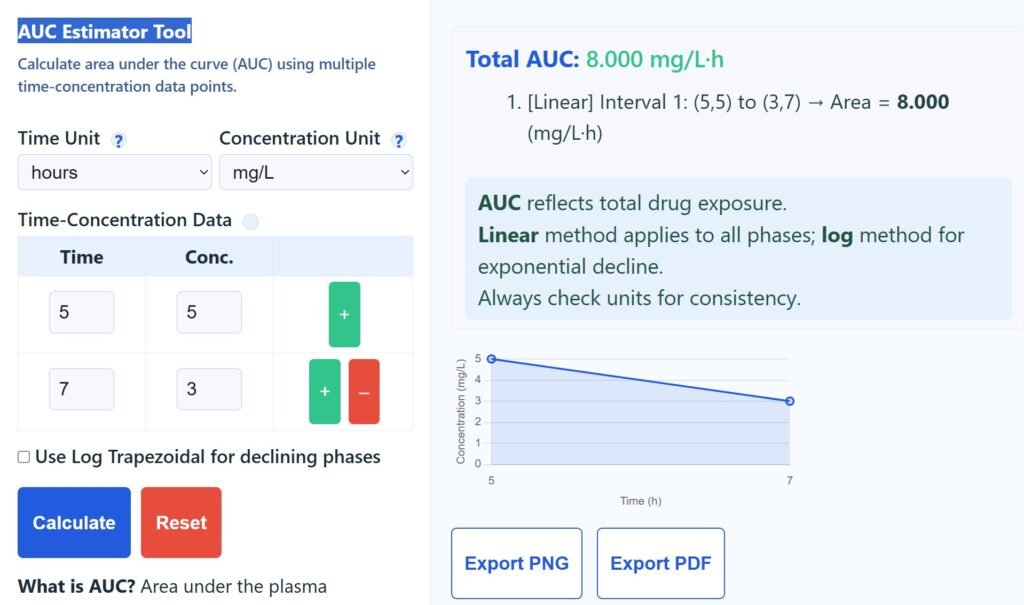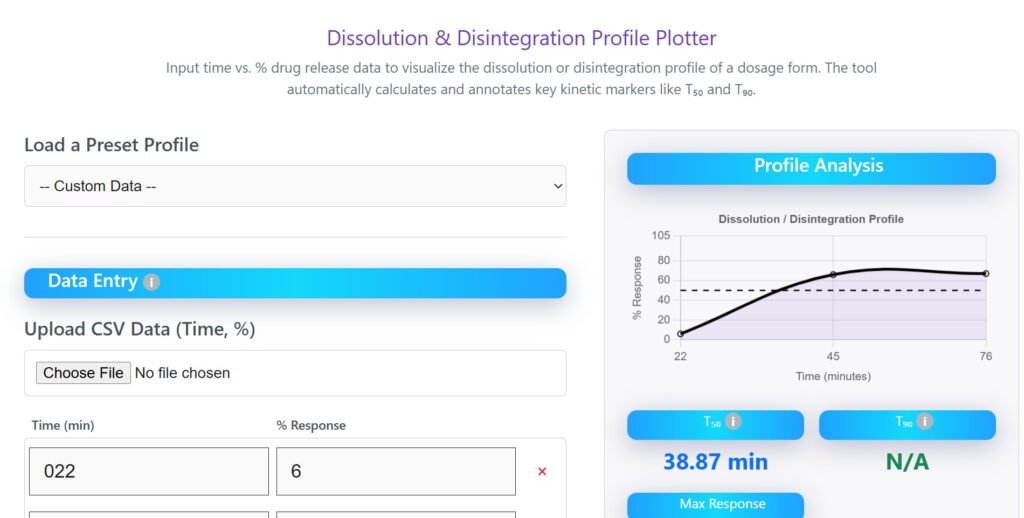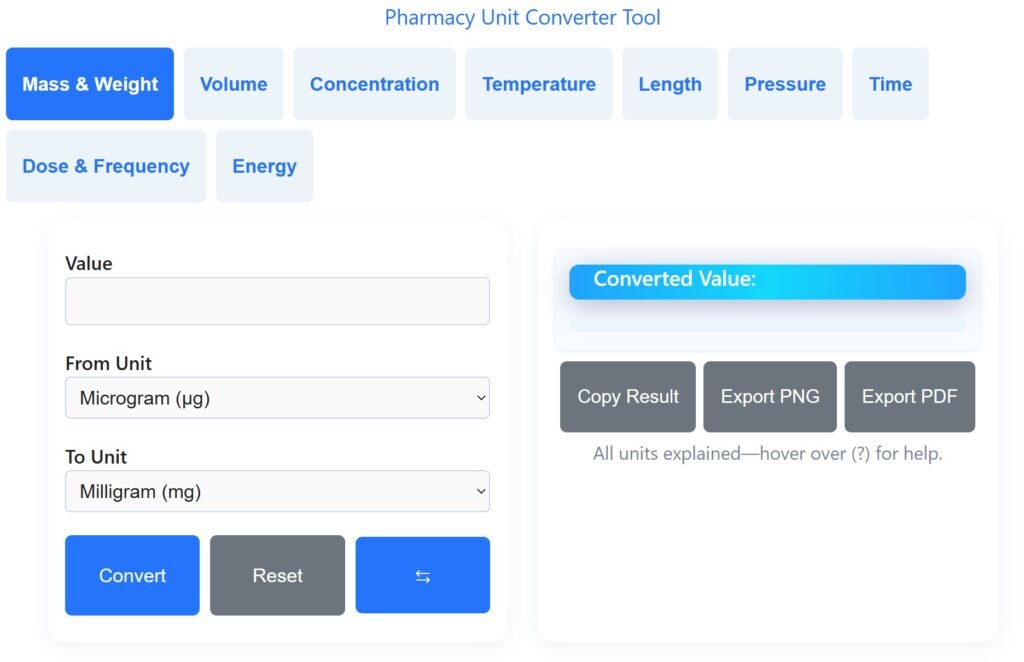Are you a pharmacy student or a teacher? If you’re a pharmacy student in 2025, you already know how busy life can get. Between lectures, labs, and never-ending assignments, you need every advantage you can get. One of the best ways to stay ahead is by using online calculators made just for pharmacy students. These calculators take the hard math out of your daily work, so you can focus more on learning and less on complicated equations. Here are the top 10 must-have calculators for pharmacy students this year, along with why they are so helpful and how they can make your study life easier.
Table of Contents
1. Molarity Calculator
A molarity calculator is a true lifesaver in pharmaceutical chemistry. Molarity is a basic but crucial concept. You need it to prepare solutions, plan experiments, and solve chemistry questions. But figuring out molarity by hand can be confusing and easy to mess up. With an online molarity calculator, all you do is enter the data. Instantly, you get the right answer. This tool is perfect for lab work, assignments, and exam prep. You’ll save time and avoid mistakes. Try it here.
2. Dilution Calculator (C₁V₁ = C₂V₂)
Dilutions are everywhere in pharmacy, whether you’re working with chemicals, IV fluids, or making lab solutions. The classic equation, C₁V₁ = C₂V₂, can be tricky to use, especially when you’re tired or stressed. The dilution calculator makes it fast and easy. Plug in the concentration and volume you have, plus what you want to achieve. Instantly, you’ll know exactly how much to add or take away. This means fewer errors in the lab and more confidence in your calculations. Try it here.
3. Bioavailability Calculator
Bioavailability is about how much and how fast a drug enters your system. This concept is at the heart of pharmacokinetics and biopharmaceutics. Calculating it by hand can be complex, with several formulas to remember. The bioavailability calculator handles it all for you. Just enter the numbers and it gives you the percentage. You’ll understand your subject better and be able to check your answers on homework or during research. Try it here.
4. Drug Half-Life Calculator
If you’re studying how drugs move through the body, you need to know about half-life. The drug half-life calculator makes this calculation simple. Instead of wrestling with formulas, enter the values for elimination rate or half-life. The calculator gives you the answer immediately. This is perfect for quick checks during study sessions, lab reports, and even in clinical placements. Try it here.
5. Percentage Solution Calculator (w/v, v/v, w/w)
Solutions come in many forms: weight/volume, volume/volume, or weight/weight. Knowing how to switch between them is key for lab work, compounding, and pharmacy practice. The percentage solution calculator does all the conversions for you. No more confusion about which formula to use. It’s a major help during labs or while writing reports. Try it here.
6. pH and pKa Relationship Tool (Henderson-Hasselbalch Equation)
Acids, bases, buffers—these can get complicated. The Henderson-Hasselbalch equation is everywhere in pharmacy. Memorizing and applying it under exam pressure is tough. The pH and pKa relationship tool lets you enter your values and see the result right away. You can double-check your homework and really understand buffer systems, which are essential for both chemistry and clinical pharmacy. Try it here.
7. Creatinine Clearance Calculator
Dosing drugs for patients with kidney problems can be stressful. The creatinine clearance calculator helps you estimate kidney function fast. You enter age, weight, serum creatinine, and sex. The calculator does the rest. This is vital for safe drug dosing in clinical practice and patient case studies. Try it here.
8. AUC (Area Under Curve) Estimator
Pharmacokinetics is full of graphs, especially AUC or Area Under the Curve. This tells you how much drug is in the blood over time. Calculating AUC by hand means lots of math, but the AUC estimator makes it quick and easy. This tool helps you master a core concept in pharmacy and finish assignments faster. Try it here.
9. Tablet Disintegration & Dissolution Profile Plotter
Studying how tablets break down and dissolve is a big part of pharmaceutics. The tablet disintegration & dissolution profile plotter allows you to enter data and instantly create graphs. This is perfect for lab reports and presentations. It saves you from making graphs by hand and helps you spot trends at a glance. Try it here.
10. Unit Converter for Pharmacy
Converting units is a daily job in pharmacy. Whether you’re switching between milligrams and grams or liters and milliliters, you need to get it right. The pharmacy unit converter is a simple but essential tool. It keeps your work accurate and saves time, so you don’t make mistakes that could affect patient safety or your grades. Try it here.
Each of these calculators is designed with pharmacy students in mind. They turn hours of calculations into seconds. They help you check your work, save time, and feel more confident. Whether you’re in your first year or final year, these tools can make a big difference. Many of them are useful for real-world pharmacy practice, not just exams. You can access them online for free, so you can use them anytime, anywhere.
When you use these calculators, you’re not just making your life easier—you’re also learning faster. You can focus on understanding the bigger picture, instead of getting stuck in complicated math. The best part? Each calculator comes with an easy-to-understand interface. You don’t need to be a tech genius to use them.
If you’re serious about your pharmacy studies in 2025, bookmark these calculators. Share them with your classmates. Use them during late-night study sessions, labs, and while writing up assignments. You’ll notice the difference right away: less stress, fewer mistakes, and more time to focus on what really matters—learning and becoming the best pharmacy professional you can be.

I am a Registered Pharmacist under the Pharmacy Act, 1948, and the founder of PharmacyFreak.com. I hold a Bachelor of Pharmacy degree from Rungta College of Pharmaceutical Science and Research. With a strong academic foundation and practical knowledge, I am committed to providing accurate, easy-to-understand content to support pharmacy students and professionals. My aim is to make complex pharmaceutical concepts accessible and useful for real-world application.
Mail- Sachin@pharmacyfreak.com

